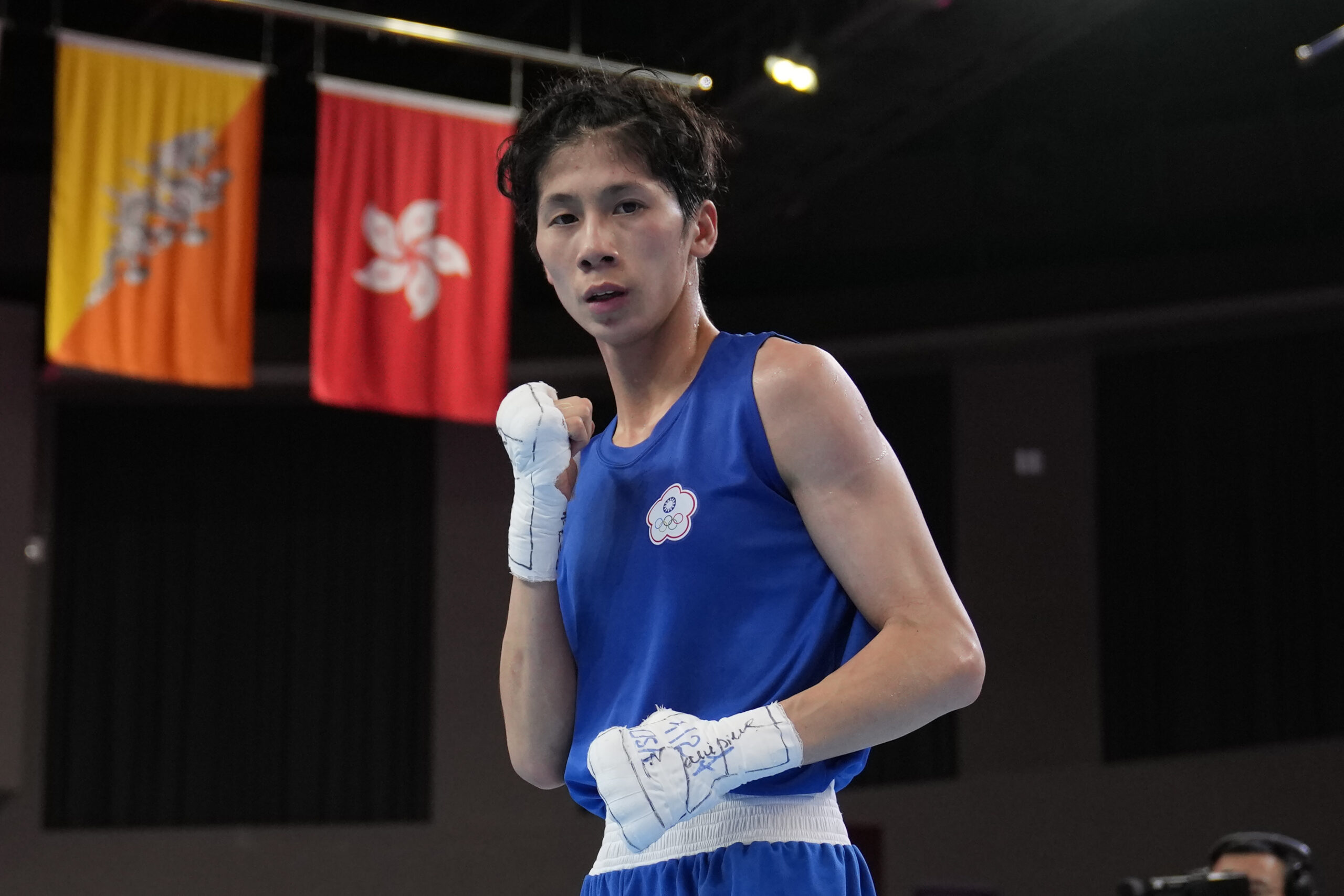Algeria’s Imane Kherif (centre) arrives to face Italy’s Angela Carini in the women’s 66kg boxing qualifying round of 16 during the Paris 2024 Olympic Games at the Paris Arena North in Villepinte on August 1, 2024. (Photo by MOHD RASFAN / AFP)
Algerian boxer Imane Kherif easily defeated an Italian boxer at the Paris Olympics on Thursday, sparking controversy after she was disqualified from her previous bout for allegedly having high testosterone levels.
Figures such as Italy’s far-right Prime Minister Giorgia Meloni were quick to condemn Khelif for being allowed to compete in the Summer Olympics.
Read: Gender-challenged boxer Imane Kherif wins first bout at Paris Olympics
As controversy threatens to overshadow day six of the Olympics, here are some facts about testosterone.
What is Testosterone?
Testosterone is a sex hormone produced by both men and women, but men produce up to 20 times more testosterone, primarily in their testes.
Women produce much smaller amounts in their ovaries and adrenal glands.
According to Mount Sinai Hospital in the US, normal levels of testosterone in men are estimated to be between 10 and 35 nanomoles per litre of blood.
Read: Female designation on boxers’ passports key for Paris Olympics
For women, it is 0.5 to 2.4 nmol per liter.
Testosterone levels also vary greatly with age and season.
When a person naturally produces too much of a sex hormone, such as testosterone, it is called hyperandrogenism.
Research shows that the condition affects about 5% of women, and in about 70% of those cases, it is caused by polycystic ovary syndrome.
Symptoms include acne, body hair growth, and scalp hair loss.
How does this impact the sport?
Although testosterone can increase bone and muscle mass, intentionally increasing its levels is a common form of doping and is prohibited.
Research has shown that excess testosterone is common among top athletes.
However, the extent to which the hormone enhances performance remains a matter of debate.
Read: IOC backs Paris Olympics boxer who failed gender test
Magali Martovic, the International Olympic Committee’s human rights chief, said in 2021 that there was no “scientific consensus” on how testosterone affects athletic performance.
At the 2021 Tokyo Olympics, New Zealand weightlifter Laurel Hubbard will become the first openly transgender woman to compete in Olympic sports.
To qualify, men had to maintain testosterone levels below 10 nanomoles per liter for at least 12 months.
Despite meeting the requirements, Hubbard’s participation was widely criticized.
At the end of 2021, the IOC gave up on formulating uniform guidelines for these participation standards, leaving it up to each international sports federation.
What about boxers?


FILE – Taiwan’s Lin Yu-ting defeats India’s Parveen during the women’s 54-57 kg boxing semifinal at the 19th Asian Games in Hangzhou, China, Wednesday, Oct. 4, 2023. (AP Photo/Aijaz Rahi, File)
Kheriff was disqualified from last year’s world boxing championships because his “elevated testosterone levels did not meet the eligibility criteria,” according to the IOC website.
The International Boxing Association (IBA), headed by Russian oligarch Umar Kremlyov, disqualified both Kherif and Taiwanese boxer Lin Yu-ting from the New Delhi tournament.
But governance, financial and ethical problems at the IBA led to it being effectively expelled from the Olympic movement last year, with the IOC taking over responsibility for running boxing at the Paris Games.
The IBA said in a statement on Wednesday that the two boxers “did not undergo testosterone testing but have undergone separate, officially recognised testing, the details of which are being kept confidential.”
IOC spokesman Mark Adams said everyone taking part in the women’s competition was “complying with eligibility rules”.
“These athletes have competed many times before, many times over the years, and they didn’t just arrive, they competed in Tokyo,” he said.
“Testosterone is not a perfect test, and many women can have so-called ‘male levels’ of testosterone and still be women and continue to compete as women,” he said.
“The idea that all of a sudden you’re going to get one testosterone test and everything is solved is unfortunately not the case,” he added.
“I hope we can all agree that we’re not calling for people to go back to the bad old days of gender testing. That was terrible.”
Check out Inquirer Sports’ special coverage of the Paris 2024 Olympics.







